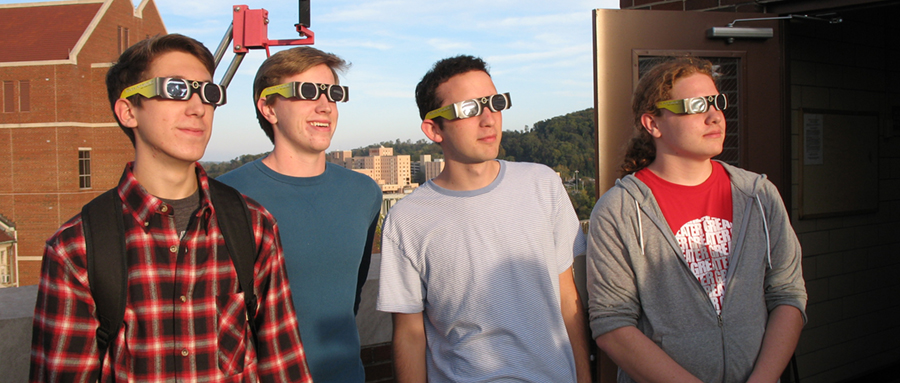Sharing the Marvels of the Physical World
Department of Physics & Astronomy

Are space and time intertwined? Is light a particle or a wave? What are the building blocks of the universe?
Finding answers to these questions can be daunting for members of the public, but students and faculty in the UT Department of Physics and Astronomy make it a bit easier to understand the science behind the universe through several engaging outreach programs.
Paul Lewis directs astronomy outreach for the department, leading astronomy enthusiasts through programs on the roof of the Nielsen Physics Building, in the department’s planetarium, and at schools and state and national parks across Tennessee. Programs include Exploring the Solar System and Mission to Mars, star parties, solar observing, and observations of the night sky. Interested in upcoming astronomical events? Tune in to Live at Five at Four on WBIR-Knoxville where Lewis makes regular guest appearances.
Kranti Gunthoti organizes Physics for Everyone, a fall lecture series for the public, which features faculty lectures on topics such as the fundamental building blocks of the universe, the weird and mysterious quantum world, and Einstein’s revolutionary ideas. In Saturday Morning Physics, faculty, along with experts from other UT departments and the Oak Ridge National Laboratory, explain how their research ties in with some of the important scientific questions that challenge our thinking and help shape our future.
The UT chapter of the Society of Physics Students also has a strong outreach component. They have physics demonstrations at the Muse Knoxville, a children’s science museum, which include making ice cream with liquid nitrogen. Members of the public can catch demonstrations on Market Square in downtown Knoxville. To celebrate Halloween, students host a Pumpkin Drop, complete with a costume contest, music, food, and the grand finale of dropping pumpkins frozen in liquid nitrogen just to watch them shatter on the UT Humanities Plaza.
Assistant Professor Sowjanya Gollapinni launched the NSF-funded QuarkNet program in 2017, which connects high school students and teachers with physicists on projects exploring the hidden nature of matter, energy, space, and time. With the help of two high school teachers, Gollapinni built a cosmic ray detector and cosmic ray data analysis in order to analyze real data from an experiment at Fermilab, a national particle physics and accelerator lab in Illinois.
From the smallest of particles to the Milky Way and beyond, the department is committed to engaging audiences of all ages and interests to share the marvels of the physical world.






